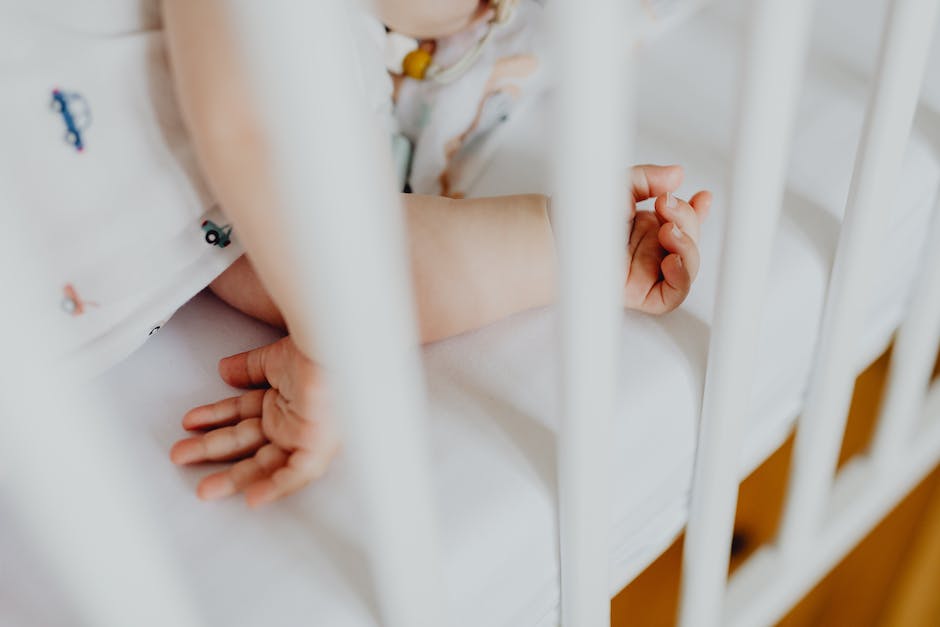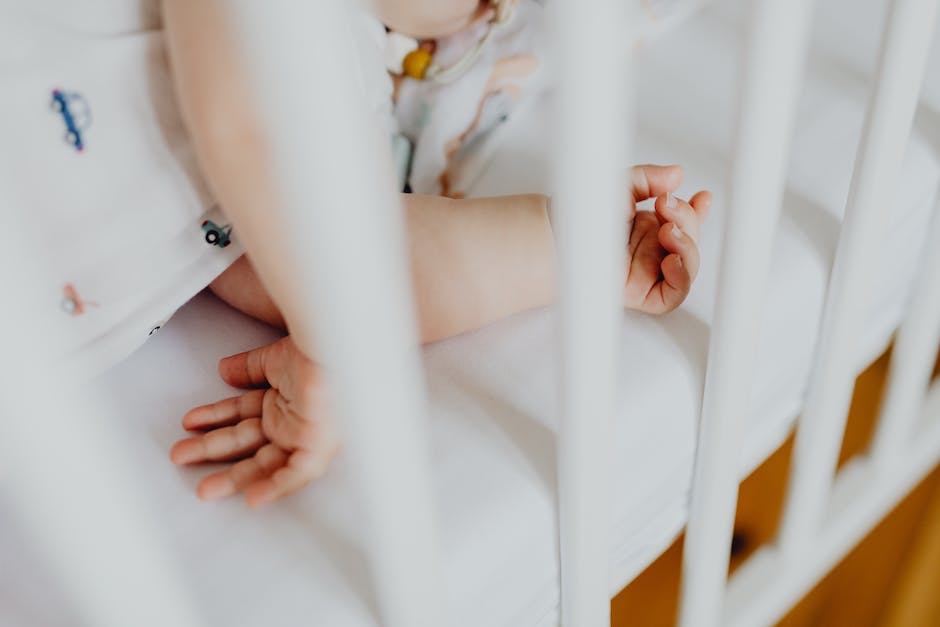There are a few reasons you might want to lower your crib mattress. Maybe your baby is starting to sit up and you want to prevent them from toppling over, or maybe you’re just looking for a way to make nighttime feedings a little easier. Whatever your reason, lowering your crib mattress is a pretty simple process.
The best way to lower a crib mattress is to unscrew the bolts that are holding it in place. Once the bolts are removed, the mattress can be lowered to the desired height.
How do I make my crib mattress lower?
Just hand tightening so just put the the support up there hand tighten go around to all the screws and make sure they’re all tight you don’t want any of these falling down on you while you’re working
If you need to lower the crib for your baby, follow these simple steps:
1. Remove bedding and mattress from the crib
2. Unscrew the bolts
3. Hold on to the bolts
4. Place the foot of the bed in the desired setting
5. Screw the bolts in the correct crib height
6. Place the bedding and mattress back in the crib
7. Check sturdiness by firmly pressing on the mattress.
At what age do you lower the crib mattress
At this age, your baby is becoming more active and may be able to get out of a lower crib. If you start to see your baby sitting up, rolling over, or getting onto hands and knees, you should begin lowering the crib mattress. This will help prevent your baby from climbing out of the crib and falling. The exact age that this happens will vary by child, but parents typically see it between the ages of 6-9 months.
First use the allen key to remove one of the fixed side rails on the crib. Have the other person hold the crib while you do this. Once the rail is removed, you will be able to lower the mattress to the lowest setting.
How do I adjust my baby’s crib?
Making the switch from bassinet to crib can be a difficult transition for both parents and baby. Luckily, there are a few things you can do to ease the process. First, try slowly transitioning your baby into the crib by letting them take naps in it during the day. This will help them get used to the new space and make them feel more comfortable. Additionally, make sure to use the same sheets in the crib as you did in the bassinet so that your baby feels familiar and secure. Finally, ensure that the crib is safe and in a good condition by checking for any loose screws or sharp edges. You can also use a baby monitor to help keep an eye on your little one.
If you are able to lower the mattress in the crib, this can be a great way to create a safe sleep environment for your baby. Make sure that there is no gap between the mattress and the crib rails to avoid any safety hazards.
Is my crib mattress too high?
The AAP says that the crib mattress should be no less than 26 inches below the side rail at its tallest setting. By the time your child is taller than 35 inches, the AAP recommends that they no longer sleep in a walled crib.
You’ll see this steel rail is held in by one And two bolts and just like the little keys on the table there You can see that it is also locked into place The whole thing is very sturdy and will not move
Why should a crib be 3 feet from a window
When placing your baby’s crib, you want to make sure that it is at least two to three feet away from any windows. This way, your baby will not be able to reach it and there’s also less of a chance that they would fall out if the window was open.
There is some evidence that suggests that bringing in a mattress from another home might slightly increase the risk of sudden infant death. When using your own mattress for a second (or more) time, ensure that it is still firm and flat with no tears or holes, and is not sagging in places.
What age is best to transition out of crib?
Most toddlers transition from a crib to a bed between the ages of 18 months and 3 years old. However, some toddlers may transition between the ages of 2 and 25. In general, most toddlers make the move from a crib to a bed between the age of 18 months and 3 years old.
Whether or not to transition your baby to a crib is a decision that many parents face. There is no right or wrong answer, and ultimately it is up to you to decide what is best for your family. If your baby is sleeping peacefully in the bassinet, it might not be time to rush into transitioning the baby to a crib. But the longer you wait can determine the resistance encountered with your baby. If you decide to wait until closer to 6 months, your baby may be more resistant to the change. But if you decide to transition earlier, around 3 months, your baby may be more adapted to the change. Ultimately, it is up to you to decide what is best for your family.
What is a cribbing tool
The steel head on this cribbing tool is used to remove ballast under rail and ties. The wood handle provides a comfortable grip and is also durable. This tool is essential for anyone who needs to clear trackbeds quickly and easily.
If you want to try and pick your baby up without him or her waking up, you can try and flow them over the side of the crib and hold them there for a few seconds. If they don’t wake up, you can then slowly lower them down onto the mattress. Just make sure you’re moving slowly and gently so as not to wake them up.
What to do when baby sits up in crib at night?
If your baby is sitting up and happy, but stuck in one position, try responding to her from time to time and gently repositioning her. You can also place a heavy hand on her hip or pelvis for a short time to encourage her to lie down. However, don’t force her to lie down, and don’t hold her down.
This topic is called the “crying it out” method, and it is a way to help train your baby to falls asleep independently. You start by letting them cry for a few minutes before checking on them, and then you gradually increase the intervals between checking on them. The goal is to have your baby crying for no longer than 10 minutes at a time.
Why does room sharing reduce SIDS
Goodstein’s study found that when babies sleep in the same room as their parents, they sleep more shallowly and this helps to prevent SIDS. Additionally, room sharing makes breast-feeding easier, which is protective against SIDS.
A two month old baby is very small and not ready for sleep training or transitioning to a new bed. You must wait until your baby is at least three months old to sleep train.
Warp Up
To lower a crib mattress, first remove the mattress from the crib. Then, fold the mattress in half so that the side that was facing up is now facing down. Next, place the mattress back in the crib so that the side that was previously facing down is now facing up. Finally, lower the crib rails to their lowest setting.
There are a few things you can do to lower your crib mattress. You can adjust the mattress height, use a thicker mattress, or put a board under the mattress. You can also use a sleep positioner to lower the mattress. If you have a baby, you can also use a bassinet or cradle.
